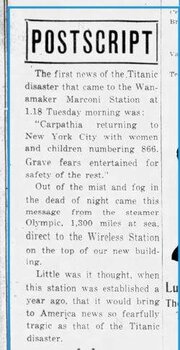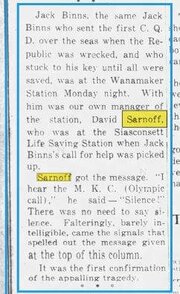Gordon Mooneyhan
Member
I have been trying to figure out where in the sunspot cycle Earth was in 1912, as that would help estimate how far the Titanic's wireless could reach. I recall that on the trip from Belfast to Southampton, Bride and Phillips worked stations in the Canary Islands and Egypt. I want to say the maximum distance was 3500 miles. I recall that this information came from "On A Sea of Glass."I would like to hear from some of the radio guys on this board on that. I think it would be possible for him to recieve the signals if things were lined up just right. The way radio signals propagate off the ionosphere. But I could wrong about that. Not sure about the spark gap type signals. Only experience I have is on CB radio's. When skip was involved. I could here people talking from 1000 miles away. But if I moved 50 yards down the road I would lose them.

 )
)



